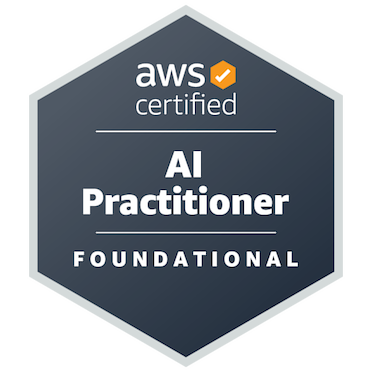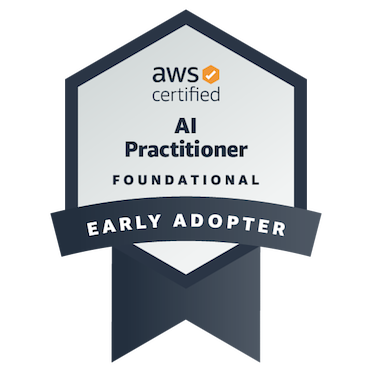
About Me
Eager to explore and master emerging technologies, continually enhancing technical expertise and problem-solving skills. Experienced in developing machine learning models and conducting statistical analyses to extract actionable insights. Demonstrated success in forecasting energy consumption patterns and improving decision-making processes. Skilled in leveraging tools like Python, Tableau, and cloud platforms to analyze and visualize complex data. Proficient in predictive, descriptive, and exploratory data analysis to uncover trends and optimize outcomes. Experienced in refining engagement strategies, leading to measurable improvements in outreach and collaboration. Adept at designing effective learning strategies that boost confidence and engagement among participants. Passionate about applying data-driven methods to solve real-world challenges across diverse industries. Dedicated to improving processes through innovative approaches and continuous learning. Motivated to contribute to meaningful projects that make a tangible impact.
Education
Master of Science in Business Analytics
Oakland University
April 2025
Bachelor of Engineering in Computer Engineering
Savitribai Phule Pune University
June 2021
Diploma in Computer Engineering
Maharashtra State Board of Technical Education
June 2017
Skills
Programming Languages: Python, R, SAS
Databases: SQL, Microsoft SQL Server, Microsoft Access
Business Intelligence Tools: Microsoft Excel, Alteryx, Tableau Desktop, Microsoft Power BI, SAS Visual Analytics, SPSS
Data Analysis Techniques: Predictive Analytics, Statistical Analysis, Data Collection, Exploratory Data Analysis (EDA), ETL, KPI Monitoring, Data Visualization
Cloud Platforms: Google Cloud Platform, Amazon Web Services
Certifications
Projects

Detecting Fake News using LSTM Deep Learning Model with Real-Time Explanation Capabilities
Developed a web app using LSTM to detect fake news with real-time predictions, confidence charts, keyword highlights

Analyzing Amazon Reviews for Helpfulness
Consumer electronics review analysis using psycholinguistic features, sentiment, humor, and sarcasm to predict helpfulness with NLP and machine learning models

US Energy Consumption and Production
A 74-Year US Energy data analysis 5-Year forecasting using traditional models and machine learning models

Exploring Globe Happiness
Analyzing global happiness factors using data modeling in R and Python.

Ford Cars Price Prediction
Predictive modeling for Ford resale pricing, optimizing insights for inventory strategy.

Forecasting Netflix Stock Price
Forecasting Netflix stock price and volume for short-term investment insights.

Real-Time Disaster Management System
Simulate disaster management project demonstrating coordination and project management skills.

REXUS Data Analysis
Excel VBA app streamlines U.S. government property management with data insights.

Superstore Data Analysis
Data warehouse, ETL, SQL, Power BI for retail insights, efficiency boost.

Mask Detection System
Build an IoT system that will detect if the person is wearing a facemask.

Decentralized Banking Application
Developed decentralized banking application using blockchain technology to securely exchange digital currency.

Text Analytics using Subjective Summarization
Analysis of review system based on positive, negative, and neutral keywords.

Trends in Mind: A Comprehensive Analysis of Mental Health Changes
Identified mental health trends, supporting global strategies for targeted interventions

Detecting Fake News using LSTM Deep Learning Model with Real-Time Explanation Capabilities
Utilizing deep learning (LSTM), this project aims to classify news articles as fake or real. The model is integrated with a fully responsive web application that provides updates in a real-time basis and is trained on real-world datasets. Accomplished via Chart.js visualization of confidence metrics. Diagram-based explainability through keyword highlighting. Collection of user feedback, moderation admin dashboard. Complete deployability via Docker and embeddable through iframe.
Key Features
Fake news classification using LSTM algorithm. Real time prediction with confidence visualization. Explainability via keyword marking. Feedback collection through form with Silent SQLite database. Admin panel for designated deletion of feedbacks. Docker deployment and iframe embed compatibility
Tools Used:
Python, TensorFlow, Keras, Flask, SQLite, Chart.js, HTML/CSS, Docker, Google Colab

Exploring Globe Happiness
This project aims to analyze the factors influencing happiness scores worldwide using the World Happiness Report dataset. The analysis will begin with detailed exploratory data analysis (EDA) to uncover patterns in happiness indicators such as social support, life expectancy, freedom, generosity, and perceptions of corruption across various countries and regions. The project will utilize R for data cleaning and preparation (20%) and Python for in-depth analytics, including predictive modeling and statistical analysis (80%). By building predictive models, the project will seek to identify the key indicators that most significantly impact societal happiness, providing insights into ways to increase these scores. Anticipated challenges include managing a large dataset, handling missing values, and selecting the most effective model. This project presents a valuable learning opportunity in data wrangling, feature engineering, predictive and unsupervised modeling, and effective data visualization, ultimately strengthening technical skills in both R and Python.
Tools Used:
R Programming · Python Programming

Forecasting Netflix Stock Price
This project aims to develop a predictive model for Netflix (NFLX) stock prices and trading volume over a three-month horizon, providing valuable insights for investment decision-making and market trend analysis. Using historical daily stock data, including opening, closing, high, low prices, and trading volume from February 5, 2018, to February 4, 2022, the model will forecast daily closing prices and trading volume, helping to predict future market interest and stock liquidity. Expected outcomes include accurate stock price forecasts to support short-term investment strategies and volume predictions to gauge anticipated market activity. This project leverages statistical and machine learning approaches to model Netflix’s stock behavior, offering insights that can inform traders and analysts in navigating short-term market trends.
Tools Used:
SAS (Programming Language)

Real-Time Disaster Management System
This project simulates the development of a Real-Time Disaster Management System to demonstrate project management skills in coordinating a complex data-driven initiative. The system is designed to monitor and analyze simulated disaster events—like earthquakes, floods, and storms—using data from virtual weather APIs and IoT sensors, allowing predictive modeling and risk analysis to assess potential disaster impacts. Dynamic dashboards and alert systems provide real-time decision-making support for agencies and responders, enhancing preparedness and response strategies. This simulation requires effective project management, including team coordination, resource allocation, deadline management, and communication protocols, showcasing the team's capability to integrate technical skills, maintain project alignment, and manage deliverables efficiently.
Tools Used:
Microsoft Project

REXUS Data Analysis and Real Estate Management Enhancement
This project leveraged the Real Estate Across the United States (REXUS) inventory, a comprehensive tool from the Public Building Services (PBS), to enhance the management of U.S. government real estate assets. By integrating data from REXUS and the Space Tracking and Reporting System (STAR), the project aimed to refine property management processes and increase operational efficiency. Using Microsoft Excel, a VBA-powered application was developed to allow users to filter properties based on ownership, parking availability, and other attributes. This tool generates tailored reports, enables data export, and integrates with Tableau for advanced visualizations, such as identifying optimal property locations by filtering on construction date, historical status, and property type.
Tools Used:
VBA Programming · Microsoft Excel · Tableau

Superstore Data Analysis for Enhanced Decision-Making
Conducted a comprehensive data analysis for an online retail superstore to enhance decision-making and improve operational efficiency. This project involved designing a data warehouse, performing ETL (Extraction, Transformation, and Loading) processes, and creating a Fact Orders Cube to centralize data on orders, products, and customer information. Using SQL and Power BI, generated actionable reports to identify key business insights, including profitability by region, product category performance, and high-margin customer segments. Key findings included the highest profitability in Office Supplies and specific high-profit subcategories like Copiers, while categories like Machines and Tables showed loss trends. Leveraged SQL Server Reporting Services and Power BI to present annual, category, and segment-based insights for management, helping optimize inventory, pricing strategies, and targeted marketing efforts.
Tools Used:
Extract, Transform, Load (ETL) · Microsoft SQL Server · SQL Server Reporting Services (SSRS) · Microsoft Power BI · OLAP Cubes

Used Ford Cars Price Prediction Using Machine Learning Models
This project focuses on predicting prices of used Ford cars using machine learning models. The dataset included key vehicle attributes like model, year, mileage, fuel type, and transmission. Three regression models—Linear Regression, Decision Tree, and Random Forest—were trained and evaluated. Among them, the Random Forest Regressor achieved the highest accuracy and was selected as the final model. The predicted prices were integrated into a web dashboard to help Ford dealers make faster, data-driven pricing decisions.
Tools Used:
Python · Scikit-learn · Google Colab · MySQL · PHP · AJAX

Mask Detection System
To design and implement an automated mask detection system that uses machine learning techniques to identify individuals not wearing masks in public places, such as malls, railway stations, bus stops, and schools. The system aims to support public health initiatives by ensuring compliance with safety regulations regarding mask-wearing to reduce the spread of COVID-19. It is intended to operate in real-time, providing on-the-spot notifications for individuals without masks and managing the occupancy levels in various establishments according to government-mandated guidelines. Additionally, the system will utilize an ultrasonic sensor for counting the number of people entering a mall to ensure that the occupancy does not exceed the set limits for safe distancing. The project seeks to enhance community health safety by using technology to enforce preventative measures during the pandemic efficiently.
Tools Used:
SAS Visual Analytics · SAS (Programming Language)

Decentralized Banking Application using Blockchain Technology
To develop a secure, efficient, and decentralized banking application utilizing blockchain technology that addresses the contemporary challenges of cyber-security and the inefficiencies in traditional banking systems. This project aims to leverage the inherent security features of blockchain, such as tamper-proof ledgers and decentralized consensus mechanisms, to create a banking system that is resilient to fraud and unauthorized access. The project also intends to implement smart contracts to automate transactions, thereby reducing the need for intermediaries and lowering transaction costs. Through this innovation, the project seeks to provide a robust platform for financial transactions that enhances trust, transparency, and accessibility for all users, while also exploring the integration of blockchain in areas beyond finance, such as IoT and smart systems, for a holistic improvement of digital interactions and processes.
Tools Used:
Blockchain Technology · Smart Contracts

Text Analytics using Subjective Summarization
To develop a sophisticated text analysis system that utilizes algorithms for subjective summarization to process and condense customer reviews on an e-commerce platform. The goal is to extract meaningful insights and sentiments from user-generated content, providing concise, actionable summaries that reflect the collective opinions and experiences of customers. This system aims to assist potential buyers in making informed decisions by presenting the essence of customer feedback without the need for them to go through extensive individual comments. For the e-commerce provider, the summarization tool is intended to identify trends in customer satisfaction and areas for product or service improvement. The project endeavors to enhance the shopping experience, improve customer satisfaction, and ultimately drive informed purchasing behavior through an intelligent summarization of vast amounts of reviews.
Tools Used:
HTML · CSS · Java · JavaScript · XML

US Energy Consumption and Production
This project involves analyzing 74 years of U.S. energy data and forecasting production and consumption for the next five years using both traditional and machine learning models. Traditional models like ARIMA and SARIMA were used for time-series analysis, while machine learning models like RNN, LSTM, GRU, and XGBoost were applied for detailed predictions. The dataset included dependent variables such as consumption and production, and independent variables like imports, exports, industrial consumption, stock changes, and time. Among these, the GRU model outperformed all others, showcasing the potential of advanced machine learning techniques in understanding complex time-series data. This project highlights skills in data preparation, feature engineering, and model evaluation, with valuable insights into energy trends and seasonality.
Tools Used:
Python Programming · Tableau Data Prep

Trends in Mind: A Comprehensive Analysis of Mental Health Changes
This project presents an innovative analytical approach for monitoring mental health trends and associated disorders across 20 countries from 2000 to 2018. Through the analysis of six comprehensive datasets, key patterns and trends are identified to inform evidence-based treatment strategies. Regression modeling and future projections reveal the significant impact of disorders such as alcohol use, bipolar disorder, and depressive disorder on mental health, emphasizing the need for targeted interventions. The findings underscore the importance of investing in mental health services and raising awareness to reduce global Disability-Adjusted Life Years (DALYs) rates. Future scope includes policy implementation to support individuals facing mental and substance use disorders, ultimately fostering healthier lifestyles and improved global well-being.
Tools Used:
SAS Visual Analytics · SAS (Programming Language)

Analyzing Amazon Product Reviews Based on Helpfulness
This project explores factors that influence the helpfulness of Amazon product reviews, focusing on consumer electronics. Using natural language processing and psycholinguistic analysis, the study evaluated how content, emotional tone, humor, and sarcasm impact review helpfulness ratings. Key findings show that longer, authentic, verified reviews with subtle sarcasm tend to be rated more helpful, while excessive humor and overly positive language decrease perceived credibility. The project provides actionable insights for improving review systems on e-commerce platforms and enhances customer decision-making.
Tools Used:
Python, LIWC-22, Hugging Face, SPSS, Tableau Prep, Google Colab, Excel
Publications

Mask Detection System
Build an loT system that will detect if the person is wearing a facemask.

Decentralized Banking Application
Developed decentralized banking application using blockchain technology to securely exchange digital currency.






